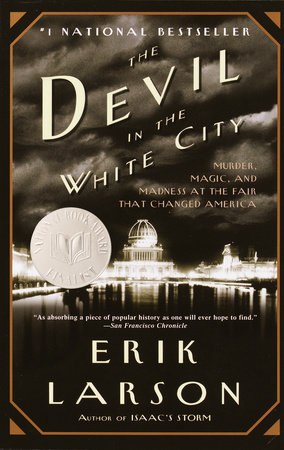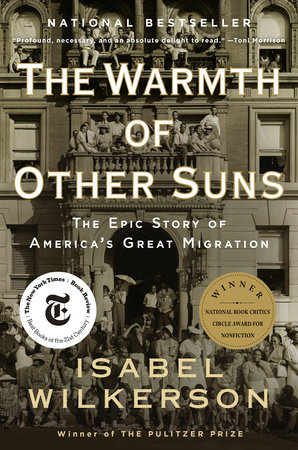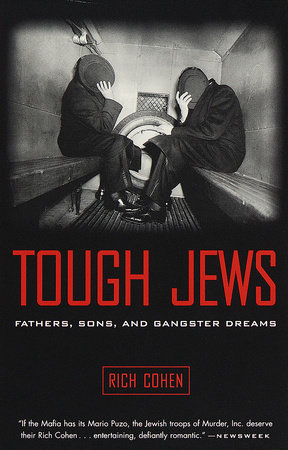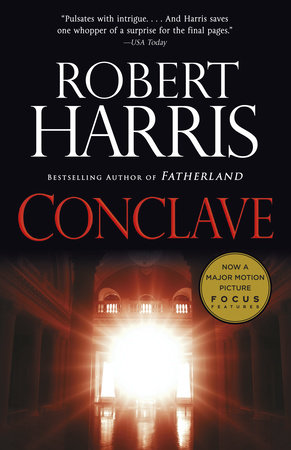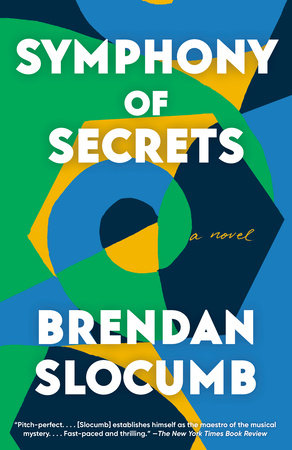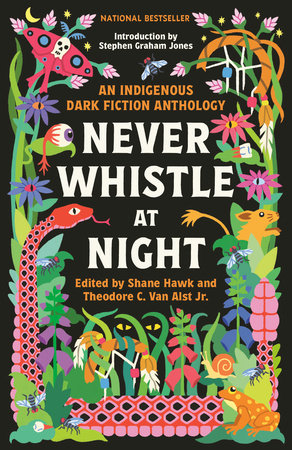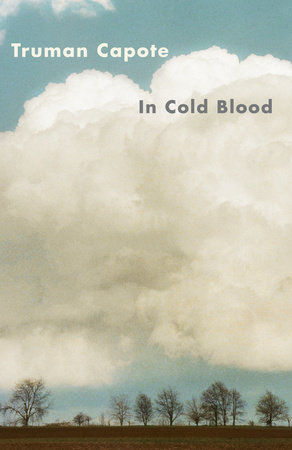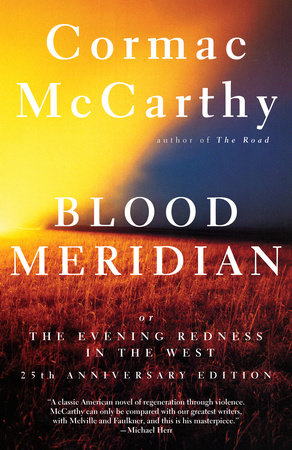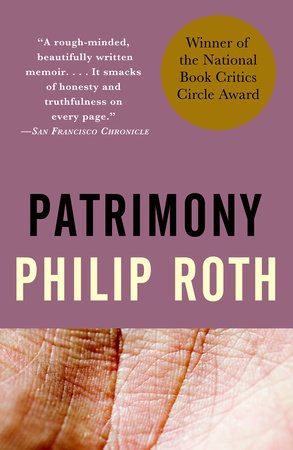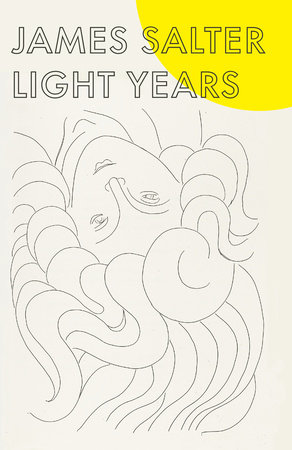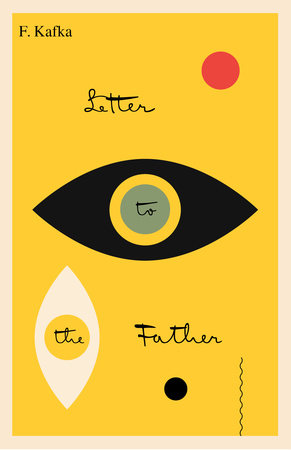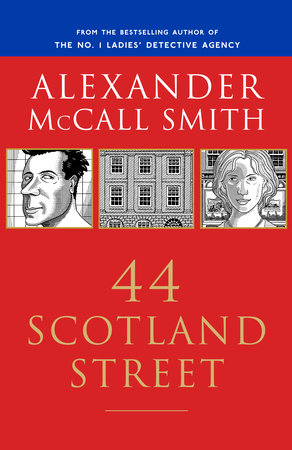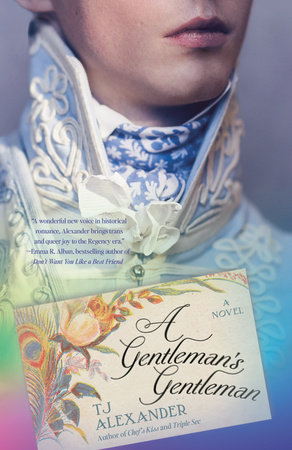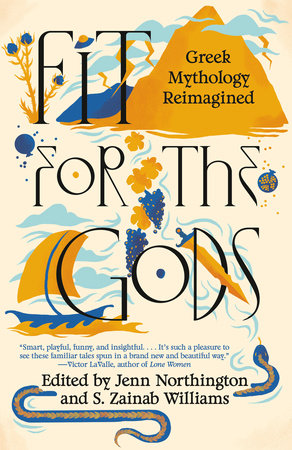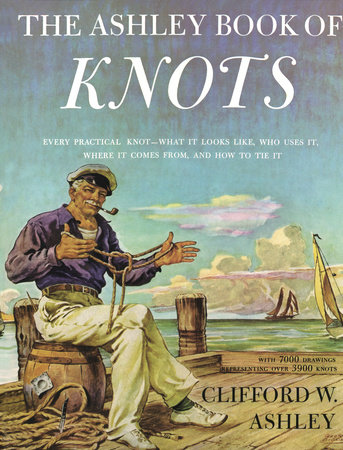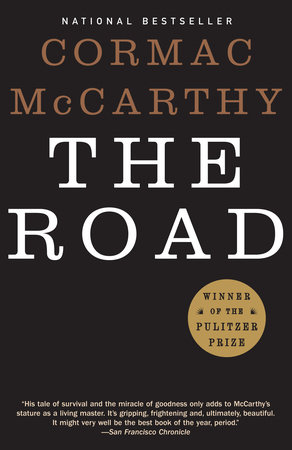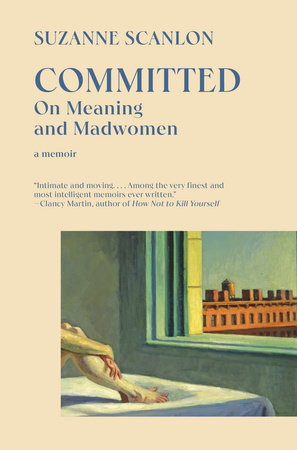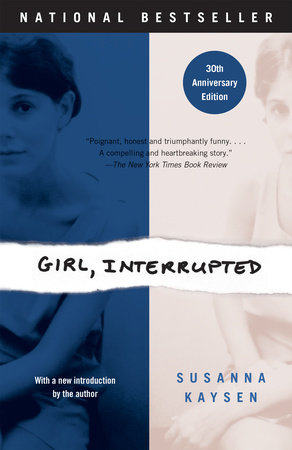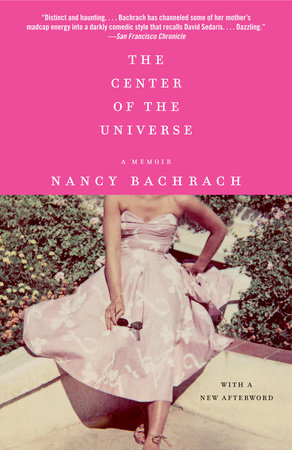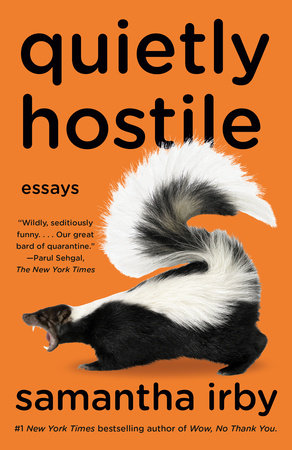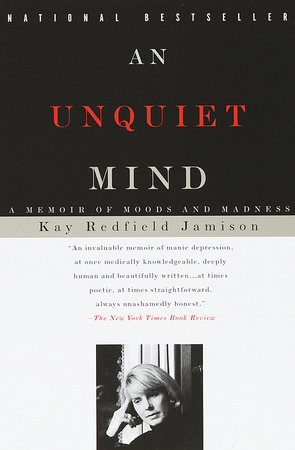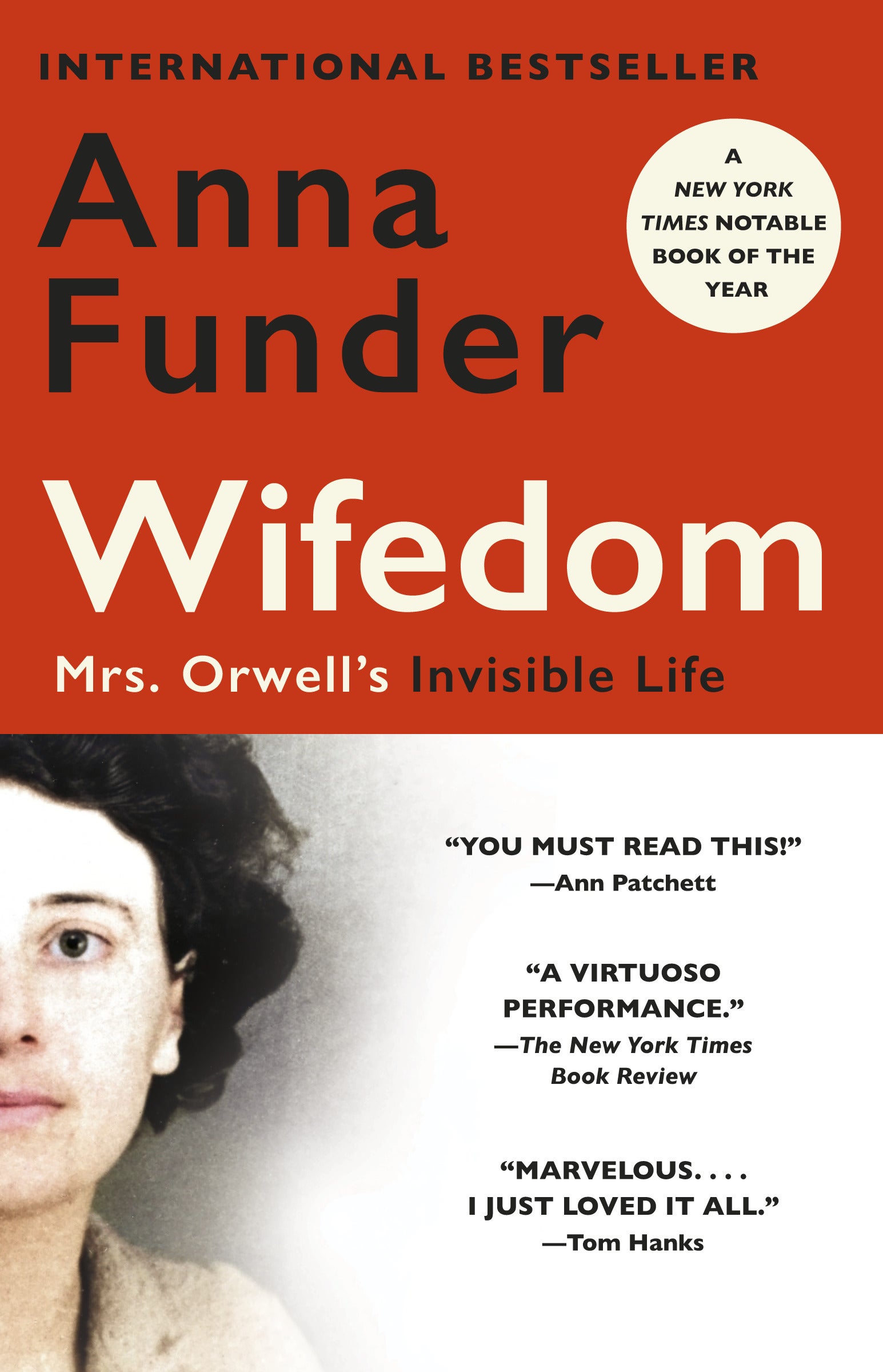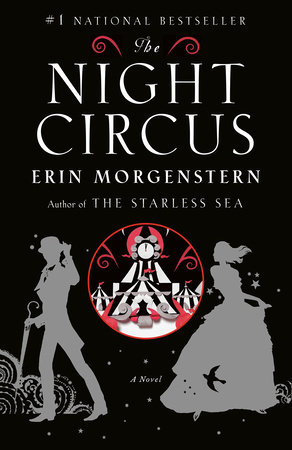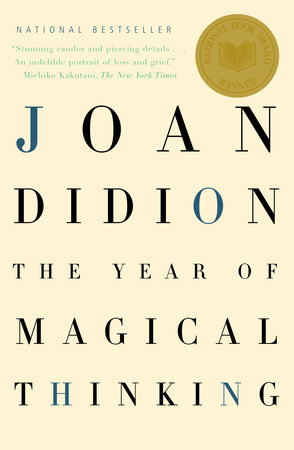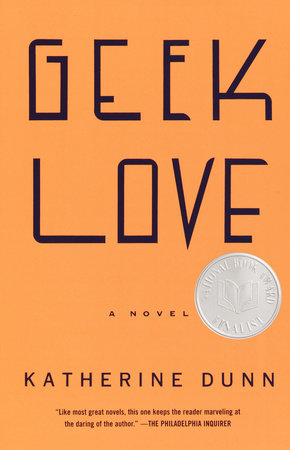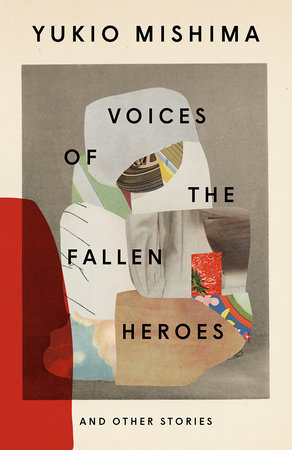Father’s Day Gift Guide

Father’s Day is the perfect occasion to celebrate the dads and father figures in our lives with a thoughtful gift that matches their interests. Whether your dad is a history buff, a fan of thrillers and mysteries, enjoys literary fiction and modern classics, has a witty sense of humor, or loves DIY projects and adventure, we’ve got you covered with this curated list of books. Here are some picks that are sure to make any dad’s day special.
For the History Buff Dad:
For the Dad Who Enjoys Thrillers and Solving Mysteries:
For the Literary Fiction and Modern Classics Loving Dad:
For the Dad with Wit and Whim:
Books for the DIY and Adventure Dad:

5 Memoirs on Mental Health
This Mental Health Awareness Month we invite you to explore a few memoirs that offer direct insight into the human experience. Memoirs can be particularly powerful, providing personal perspectives on mental health challenges and triumphs.
COMMITTED
by Suzanne Scanlon
A raw and masterful memoir about becoming a woman and going mad—and doing both at once. Transporting, honest, and graceful, Committed is a story of discovery and recovery, reclaiming the idea of the madwoman as a template for insight and transcendence through the works of Charlotte Perkins Gilman, Virginia Woolf, Sylvia Plath, Janet Frame, Audre Lorde, Shulamith Firestone, and others.
GIRL, INTERRUPTED
by Susanna Kaysen
Girl, Interrupted is Susanna Kaysen’s memoir about her time in a psychiatric hospital in the 1960s. The book offers a candid look at mental illness and the treatment of women in psychiatric care during that era. Kaysen’s narrative is both compelling and thought-provoking, shedding light on the challenges of living with mental illness and the journey toward recovery.
THE CENTER OF THE UNIVERSE
by Nancy Bachrach
Nancy Bachrach’s memoir, The Center of the Universe, tells the improbable yet true story of her mother’s miraculous recovery from mental illness following accidental carbon monoxide poisoning. This darkly humorous memoir explores the multigenerational dynamics of a family dealing with mental health issues. Bachrach’s narrative is both aching and tender, offering a splendid, funny, and lyrical account of family, truth, and the resilience of love.
QUIETLY HOSTILE
by Samantha Irby
Samantha Irby’s Quietly Hostile is a hilarious collection of essays that engage readers with laugh-out-loud moments, heartfelt passages, and awkward experiences. Irby takes readers on a tour of the gory details that make up the true portrait of a life behind the screenshotted depression memes. Her essays are relatable, poignant, and uproarious, making Quietly Hostile a tonic for anyone navigating the complexities of mental health.
AN UNQUIET MIND
by Kay Redfield Jamison
Dr. Kay Redfield Jamison is one of the foremost authorities on manic-depressive (bipolar) illness; she has also experienced it firsthand. Here Jamison examines bipolar illness from the dual perspectives of the healer and the healed, revealing both its terrors and the cruel allure that at times prompted her to resist taking medication. This a deeply powerful memoir about bipolar illness that has both transformed and saved lives.
Book Club Discussion Questions
- Part biography, part memoir, part feminist treatise and part counterfiction, Anna Funder’s Wifedom is a book that defies genre. Discuss the different narrative threads of this work, and the role each plays in the whole.
- Eileen O’Shaughnessy, George Orwell’s first wife, is a woman elided from history. Why – and how – has she been written out of the story?
- A biographer’s work is akin to that of an investigation, and in the case of this book, has involved literary, historical, feminist and on-the-ground detective work to bring the subject of Eileen O’Shaughnessy back to life. What sense of Eileen do we have from this resurrection, and what was the extent and nature of her influence on her husband’s work?
- In 2005 six letters from Eileen to her best friend, Norah Symes Myles, were discovered, which cover the period of Eileen’s marriage to George Orwell, from 1936 to 1945. What purpose do these letters play in the re-imagining of Eileen’s life, and the crafting of Wifedom?
- It was Eileen’s friend Lydia Jackson who inadvertently brought Eileen and Eric Blair together, by inviting Eileen to accompany her to a party hosted by Orwell’s flatmate. In remembering Eileen, Lydia comments that ‘Writing was her love, I think.’ Do you agree?
- George Orwell has always been one of Funder’s literary heroes, and she describes how she came to writing this book by rediscovering the joy of his work and questioning the conditions of his production. As the story of Eileen and her marriage to Orwell emerges, Funder finds herself questioning the man behind the art she loves. How does she reconcile the creator with his work?
- In Wifedom Funder reveals more of herself – writer, woman, wife, mother – than in any of her previous books. Her candour allows the comparison of a woman, a writer and a wife of the early part of the twentieth century with a woman, a writer and a wife of today. We believe ourselves to be more enlightened, more woke to gender equality. But how much has really changed?
- Funder shares that she writes, as Orwell put it, because ‘there is some lie that I want to expose, some fact to which I want to draw attention’, and in her own writing she draws on a number of Orwellian concepts such as doublethink. Discuss.
- Early married life for the Orwells in their cottage in Wallington was a period marked by much hardship – and yet among the most productive and creatively-rewarding years for Orwell. How do the sexual politics of the creative life work?
- Like his hero Hemmingway, Orwell is revered, in part, for having fought the fascists in Spain, as chronicled in Homage to Catalonia. Yet despite her apparent absence in her husband’s text, Funder reveals that Eileen was there too – at the heart of the operation. How is she effaced in Orwell’s work?
- Orwell and Eileen flee England for Morocco in a bid to improve Orwell’s health. By his own account he does something there which several of the biographers find so uncomfortable that they try to doubt it, or hide it in a footnote. What does Funder do with Orwell’s account?
- As was the case for so many women, the Second World War opened employment opportunities for Eileen. Eileen worked at the Ministry of Censorship, in Senate House, the place Orwell took as his model for the Ministry of Truth in Nineteen Eighty-Four. How might her work there have informed Orwell’s understanding of government censorship?
- Later, Eileen meets Lettice Cooper through her work at the Ministry of Food during London’s Blitz. What does their friendship mean to Eileen?
- Motherhood is an undercurrent in Wifedom in more ways than one. For Eileen it is a longtime yearning, eventually realised in the adoption of a son, Richard. And motherhood provides for some of Funder’s most exposing, connective writing in this book. Discuss.
- Eileen’s death is horrific, premature, lonely and avoidable. What does the loss of Eileen represent for Orwell – and how is it reflected in his work?
- In bringing visibility to the life and influence of Eileen O’Shaughnessy, Funder offers an intimate view of one of the most important literary marriages of the twentieth century. How did the Orwell’s marriage defy convention? What was it that kept the couple together?
- Norah’s letters to Eileen have never been found, yet Funder gives Norah voice in the book’s final chapter. Discuss the book’s ending.
- Anna Funder’s literary career was ignited by Stasiland, a work of nonfiction that exposes the Stasi, and followed by her novel All That I Am, which lays bare Nazism. Both works look at systems of oppression from the point of view of people who have the insight and the courage to resist them, often women. In Wifedom, Funder takes on patriarchy itself. Discuss.

A Gentleman’s Gentleman Book Club Kit
From the acclaimed author of Chef’s Kiss, a USA Today bestselling trans Regency romance that’s both delightfully witty and refreshingly iconoclastic.
“A Gentleman’s Gentleman is a thoroughly charming confection of a romance. If you’re looking for a tender, gentle slow burn, this is the book for you.” —Cat Sebastian, author of We Could Be So Good
The notoriously eccentric Lord Christopher Eden is a “man of unusual make” and even more unusual habits: he prefers to live far from the prying eyes and ears of the ton, and would rather have the comfortable company of his childhood cook and his aged butler than the swarm of servants and hangers-on befitting a man of his station. But Christopher’s pleasant, if occasionally lonely life is upended when he receives word from his lawyers that, according to his late father’s will, he must find a wife by the end of the Season if he intends to keep his family’s fortune and the Eden estate. Christopher cannot imagine a worse fate: as he isn’t attracted to women, his chances of making a wife happy are slim. Furthermore, if his quest to marry has any hope of succeeding, he must move to London posthaste and acquire some more suitable staff.
Enter James Harding, Christopher’s new, distractingly handsome—if rigidly traditional—valet. After a rocky start, the two strike up a fragile friendship amid the throes of the London Season . . . a friendship that threatens to shatter under the looming shadow of Christopher’s impending nuptials—and the secrets both men are keeping. With its heady combination of dry wit, slow-burn romance, and a nuanced portrait of trans identity, A Gentleman’s Gentleman stands to transform the historical romance genre as we know it.
Check out the book club kit featuring a Q&A with author TJ Alexander, book discussion questions, and playlist below!

As the days grow shorter and the nights colder, there’s nothing quite like curling up with a good book to keep you company. This winter, we invite you to dive into a selection of captivating reads that will transport you to different worlds, stir your emotions, and capture your mind from page to page. So, grab a blanket, heat up the kettle or coffee, and settle in with one of these fantastic reads.
THE NIGHT CIRCUS by Erin Morgenstern
Prepare to be swept away by the enchanting and mysterious world of The Night Circus. Erin Morgenstern’s debut novel tells the story of a magical competition between two young illusionists, set against the backdrop of a fantastical circus that only opens at night. With its lush prose and spellbinding atmosphere, this book is perfect for those cold winter evenings.
THE YEAR OF MAGICAL THINKING by Joan Didion
For a more introspective read, we invite you to turn to Joan Didion’s poignant memoir, “The Year of Magical Thinking.” This deeply moving account of love, loss, and grief chronicles Didion’s journey through the year following the sudden death of her husband. It’s a powerful, beautifully written exploration of the human spirit that will resonate with anyone who has experienced profound loss.
GEEK LOVE by Katherine Dunn
Step right up to witness the extraordinary lives of the Binewski family in Katherine Dunn’s “Geek Love.” This darkly fascinating novel delves into the world of a traveling carnival, where each family member possesses unique, often grotesque abilities. Dunn’s masterful storytelling and unforgettable characters will keep you entranced from start to finish.
VOICES OF THE FALLEN HEROES by Yukio Mishima
Perfect for the reader looking for something shorter but thought provoking, this new selection of Yukio Mishima (author of Spring Snow and The Sailor Who Fell from Grace with the Sea) short stories from the 1960s—his final decade— offers a unique glimpse into the mind of one of Japan’s greatest writers during his centennial.
THE SECRET HISTORY by Donna Tartt
If you are more in a literary thriller mood, THE SECRET HISTORY will surely capture you. Under the influence of a charismatic classics professor, a group of clever, eccentric misfits at a New England college discover a way of thought and life a world away from their banal contemporaries. But their search for the transcendent leads them down a dangerous path, beyond human constructs of morality.
THE COUNT OF MONTE CRISTO
Embark on a journey of adventure, vengeance, and redemption with Alexandre Dumas’ The Count of Monte Cristo, now a major film. This sweeping historical novel follows the story of Edmond Dantès, a man wrongfully imprisoned who seeks justice and retribution. Dumas’s masterful storytelling and richly detailed settings make this a thrilling read that will keep you captivated through the winter months.
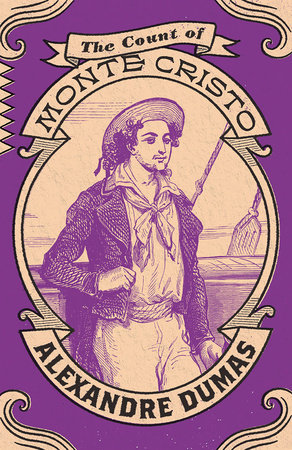
Celebrating and Protecting the Right to Read with Toni Morrison
Nobel Prize winner Toni Morrison has profoundly shaped American literature with her powerful narratives that explore African American life and heritage. Her works often tackle complex themes such as identity, race, and the historical legacy of slavery and like other books featuring these topics, her works have consistently faced bans and challenges.
As we approach her birthday on February 18, we can think of no better time to shine a spotlight on two of Morrison’s seminal works that have faced challenges and censorship: Beloved and The Bluest Eye.
We invite you to discover more about these two monumental titles through their book resumes, containing reviews from professional trade review journals as well as links to resources and relevant media, to support your efforts to defend books from censorship in your area.
The Bluest Eye (1970)

Morrison’s first novel The Bluest Eye, is a poignant story about Pecola Breedlove, an eleven-year-old African American girl in 1940s Ohio who yearns for blue eyes and blonde hair, believing they will make her beautiful and loved. Both widely acclaimed and challenged, this novel tackles issues of racial self-loathing, Eurocentric beauty standards, and the devastating effects of internalized racism.
Why It’s Banned/Challenged: The Bluest Eye is among the most widely banned books, historically challenged for alleged “sexually explicit material”, graphic content and depictions of racism.
Check out the Book Resume for The Bluest Eye. Follow along at @bannedbooksbookclub as we read The Bluest Eye together, culminating in a live book discussion on February 18th.
Beloved (1987)

Beloved is perhaps Morrison’s most acclaimed work. Set after the American Civil War and inspired by the true story of Margaret Garner, Beloved tells the haunting story of Sethe, an escaped slave who chooses to kill her child rather than see her returned to slavery and is haunted by the ghost of her dead daughter. This Pulitzer Prize-winning novel is a profound exploration of the trauma of slavery and the enduring scars it leaves on individuals and communities.
Why It’s Banned/Challenged: Beloved has been challenged for its depictions of violence, sexual content, and themes of slavery.
Check out the Book Resume for Beloved and dive even deeper with our Reading Group Guide.
Watch Toni Morrison defend the right of children to read and the importance of literature that challenges norms and provokes thought. “Taken from the 1982 event An Evening of Forbidden Books, this selection displays the admirable quality of an artist and activist unwilling to compromise when censors—in whatever form—threaten to deny the creative spirit access to literature and literacy.”
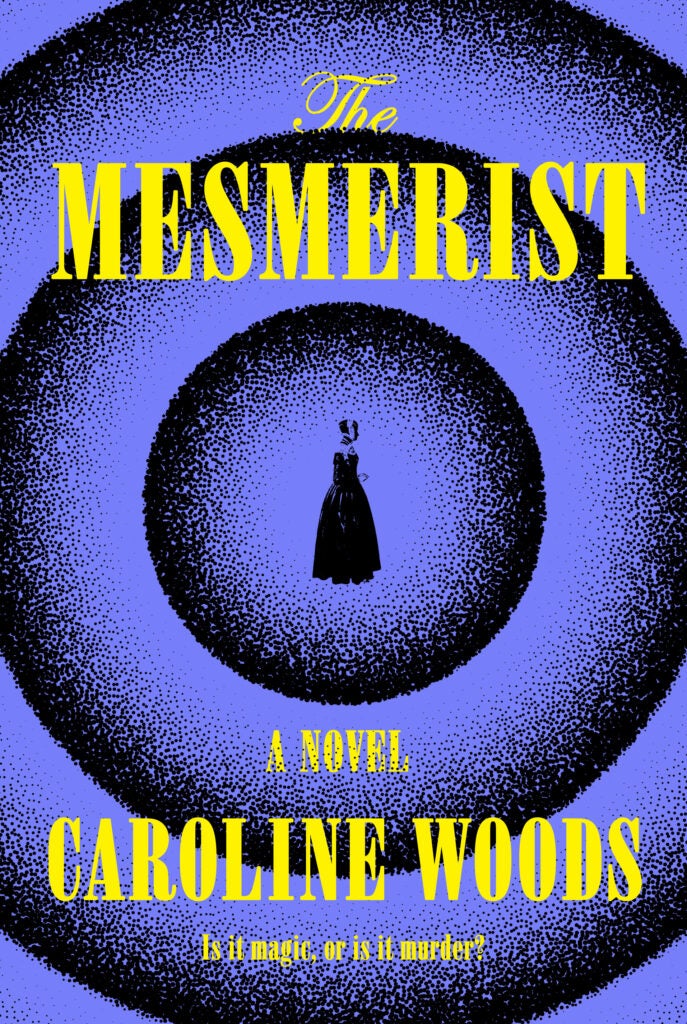
Reading Group Center: Can you tell us a little bit about the real-life individuals or historical circumstances that helped shape The Mesmerist?
Caroline Woods: I started out wanting to write about progressive women in the American Midwest during the Gilded Age. That era has such a reputation for selfishness, for lavish waste while so many others were suffering, but not all “society” women were behaving that way. There were women, like Jane Addams in Chicago, who were actively trying to combat inequality. Quickly my research led me to the Bethany Home in Minneapolis, which was a home for unwed mothers run by some of the richest women in town. Their compassion for “fallen” women, many of whom were sex workers, seemed far ahead of its time. The home was run by seven board members; I settled on Abby Mendenhall to serve as one of my point-of-view characters in The Mesmerist. A Quaker, she had a refreshing informality (as revealed in her diaries)—she seemed just as at home with a brothel madam as she did with the mayor.
So now I’d found my setting, and one of my main characters, but where was the conflict? That was where a sensational murder, one of the biggest true crime stories of the 19th century, came in.
RGC: In your opinion, what is the appeal of an unreliable narrator?
CW: I love unreliable narrators because they add another layer of mystery. While the reader is trying to anticipate what’s next in the plot, they also must decode the narrator’s biases and blind spots and compare this to the other characters’ versions of events. I think this works especially well in a book with multiple points of view; you get these rewarding reveals as each character fills in a bit of the puzzle.
I also think unreliable narrators can, paradoxically, get closer to a truthful representation of reality. We all have our own versions of events, of ourselves, of others; memory is slippery, facts are malleable. I might always be the hero of my own story, but I guarantee I’ve been the villain in someone else’s.
RGC: Have you always been interested in true crime? What intrigued you about the real-life murder at the heart of The Mesmerist?
CW: I have always been drawn to true crime. I watched way too many episodes of Unsolved Mysteries as a child. When I read about this one, I just couldn’t believe the victim—who by all accounts was a savvy, independent, and sharp businesswoman—fell for this man’s clumsy scheme. Was he really that handsome and charming? Or did he actually have irresistible mesmeric powers, as his hitman later claimed? The crime was so dramatic, and so emblematic of its spiritualist era; the murder happened the same year the novel Trilby made Svengali a household name.
RGC: Is there a character in the book that you identify with most?
CW: Both Faith and May hold special places in my heart. I modeled Faith’s background after my Hungarian great-grandmother’s, whose father was killed in his twenties in a Pennsylvania coal mine. After that, her life was very precarious. The community married her mother off quickly, to a much older widower from Austria, to neutralize the threat of a young widow.
Still, of the three characters, I might identify with Abby Mendenhall the most, despite our age difference. She’s sixty-three, I’m forty-one, but I’m old enough to have grown a little weary, as Abby has, as I look out at the world and all its unfairness and wonder if my contributions can make a difference. One of the book’s themes is the frustrating limits of progressivism in the face of systemic injustice. Abby works within the bounds of proper society and worries she can’t do enough. Faith takes matters into her own hands. I suppose I strive to be a little more like Faith.
RGC: Which books or authors have most inspired your writing?
CW: While I’m writing, I try to read novels that were written in the same period the work is set. (As opposed to historical fiction by a contemporary author. For this book, my best fictional resource was The Awakening by Kate Chopin. The book provided a wealth of knowledge in terms of patterns of speech, dress, food, and customs, but beyond that, it’s a remarkably feminist text for the 1890s. Studying the way Chopin wrote about forbidden lust and longing, and sexual frustration in a buttoned-up society, really helped me to create May’s character.
RGC: This is your third novel. How has your writing process changed since you wrote Fraulein M. and The Lunar Housewife?
CW: I always begin with a loose outline, with the first third of the book well-defined and the ending murkier. As I write and do research, plot ideas come to me in sudden bursts, and I stitch those into the fabric of the book.
When I wrote Fraulein M., I didn’t have children yet, but I did have a full -time job. It took me about five years. I would write in huge chunks, once or twice a week. Now I can see that the work would grow cold in between, and that by the end of those marathon sessions I would start to fatigue and produce words I’d just end up deleting later.
The Lunar Housewife was written during the early days of the pandemic. I already had two little kids and was home with them all day long. I knew I wanted to write another book, but I had to become more disciplined: I decided to write 1,300 words every night, after they were in bed. Ernest Hemingway is a character in Lunar, and I decided to follow his advice: set your daily count, don’t get up until it’s done, and stop right there, while it’s still good. That way, when you sit down the following day at the same time, you’ll know right where to pick up. I couldn’t believe how well this worked. I had a first draft I was excited about in three months.
My process is still evolving. When I wrote The Mesmerist, I couldn’t do it at night anymore. My kids go to bed later now. But they were back in school, and older, so the school hours were longer. And I had the great fortune of working alongside my editor this time. I wrote a third of the book at a time, and then she would read, and we’d workshop what I’d written together and talk about what was next. She brought fresh ideas to the table and helped me see angles of the story I hadn’t considered. Working with an editor is such a luxury and a joy—something I think most writers will understand, since we spend so much of our early careers working in solitude.
RGC: If you could ask reading groups one question about The Mesmerist, what would it be?
CW: I always like to ask readers to imagine what comes next. What awaits May and the other women in Wyoming? How about Faith, and her relationships with Abby and Charlotte? And what’s she going to do about Johnny Lundberg? Where do you see all these characters a mere twenty years later, at the start of World War I? So much would have changed by then, and May and Faith would only be about forty. I’m sorry, I think that’s more than one question, can’t help myself!
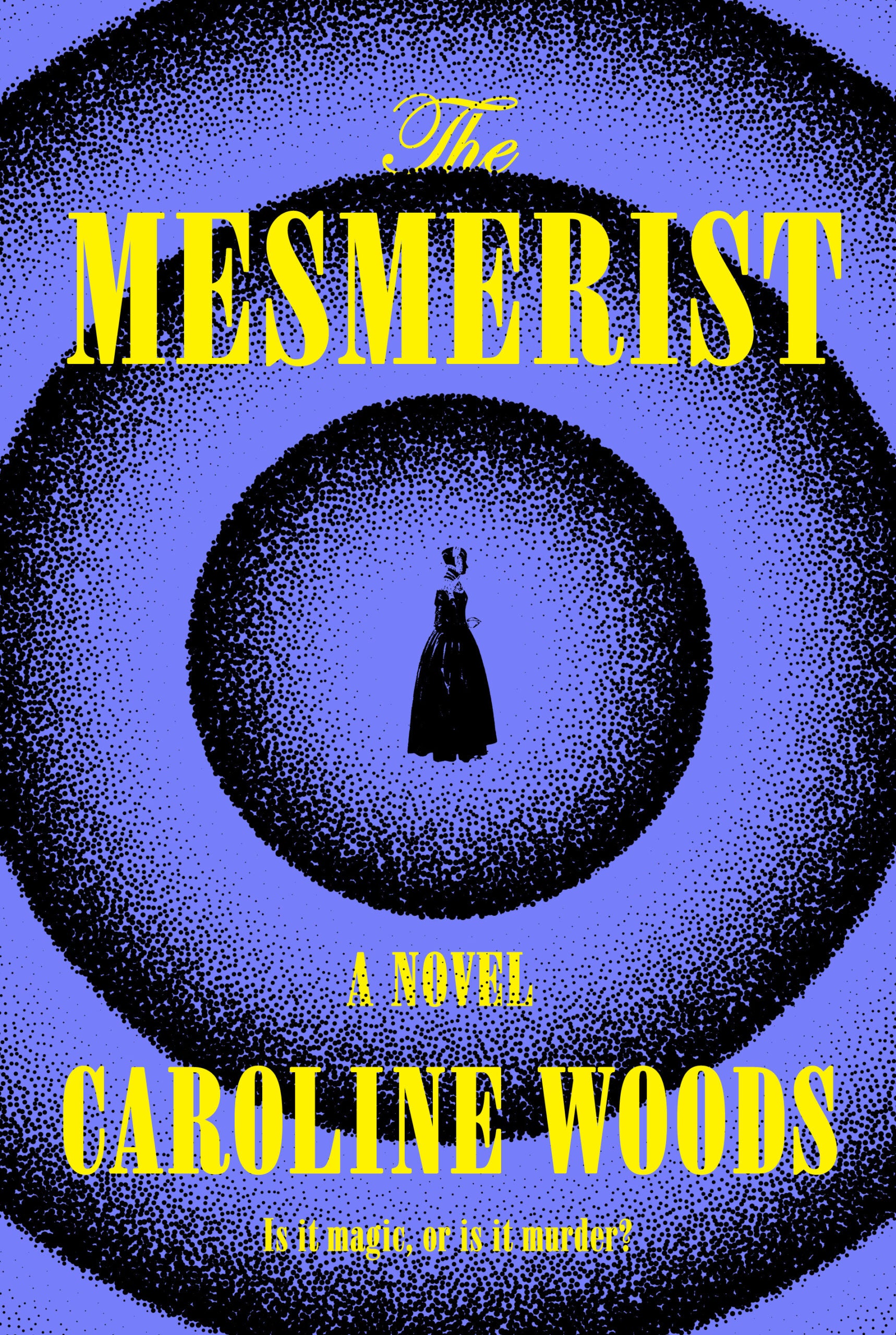

Before hypnotism, there was Mesmerism. And in 1894 Minneapolis, in the wake of a national financial crisis, spiritualism of every stripe is all the rage, and women are dying under mysterious circumstances. But until a new guest lands at the Bethany Home for Unwed Mothers, refusing to speak or explain her arrival, the sordid stories of unexplained deaths seem unconnected. Faith’s reticence is quickly interpreted as malevolence, setting the house abuzz with whispers of dark magic.
Abby, a staunch Quaker, lifelong supporter of progressive causes, and the Bethany Home’s treasurer, thinks the rumors of mystical powers swirling around Faith are nonsense, but she recognizes the danger of a good story. Unwilling to allow the Home’s important mission to be clouded by scandal, Abby tasks Faith’s roommate, May, with tracing Faith’s path to the Bethany Home.
May is desperate to end her year at Bethany Home engaged and on track to her happily-ever-after—even if her prince charming is Hal, a man she’s not sure she can trust. She uncovers a Minneapolis she never expected as she begins digging into Faith’s shadowy background, and her investigation brings her closer to polite society and Hal than she could have dreamed. The more May learns, the more she’s forced to question the motives of everyone around her, including Abby and Faith, and as more women turn up dead, May must reevaluate the future she wants, and which lies she’s willing to tell, for whom.
Rich with tension, suspicion, and sharply observed characters, Caroline Woods reimagines a classic American genre through the eyes of three bold, unforgettable women.
Check out the book club kit, complete with reading guide and complimentary recipe, at the link below!

Award-winning author Kevin Barry is back with his first novel set in America. The Heart in Winter is a savagely funny and achingly romantic tale of young lovers on the lam in 1890s Montana, and we have the perfect kit to foster discussion amongst your book clubs.
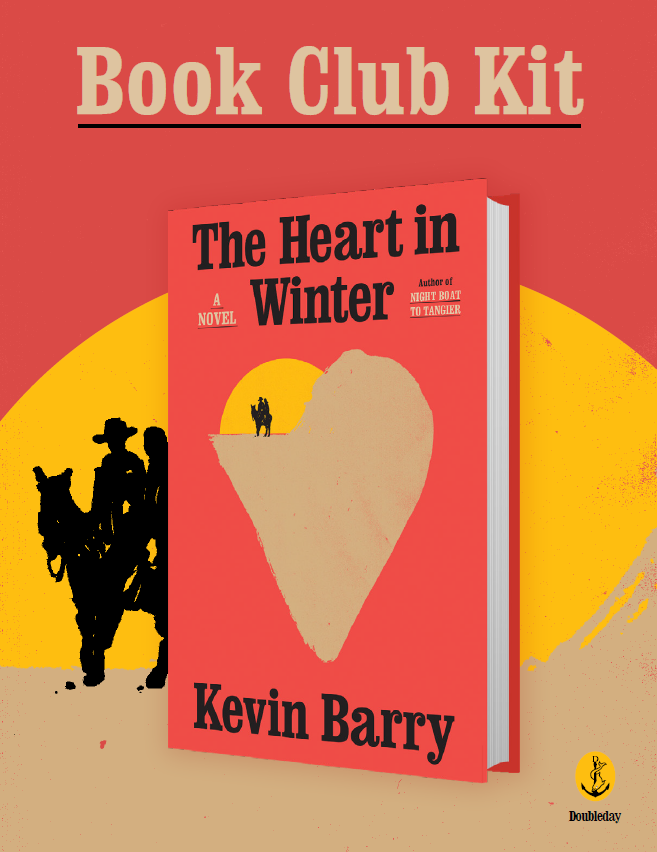
From the No. 1 Ladies’ Detective Agency to Isabel Dalhousie, Alexander McCall Smith is famous for crafting warm and witty series beloved by fans around the world. One of his most charming series, 44 Scotland Street, tells the story of this cozy Scottish neighborhood’s residents, including the star of the show, Bertie, a remarkably precocious boy–just ask his mother.
The latest installment, The Enigma of Garlic is now available, so we thought it would be a good time to brush up on the other 44 Scotland Street books. To make this easier, we’ve created a guide to the full series! Prepare yourself for a few chuckles and cozy reads that will brighten up your day.

44 Scotland Street
The first novel in Alexander McCall Smith’s beloved series introduces us to Bertie and the wide cast of characters who live on 44 Scotland Street. There’s Pat, a twenty-year-old who has recently moved into a flat with Bruce, an athletic young man with a keen awareness of his own appearance. Their neighbor, Domenica, is an eccentric and insightful widow. Love triangles, a lost painting, intriguing new friends, and an encounter with a famous Scottish crime writer are just a few of the ingredients that add to this delightful and witty portrait of Edinburgh society.

Espresso Tales
All our favorite denizens of a Georgian townhouse in Edinburgh are back in the series’ second book. Bertie the immensely talented six-year-old is now enrolled in kindergarten, and much to his dismay, has been clad in pink overalls for his first day of class. Bruce has lost his job as a surveyor, and between admiring glances in the mirror, is contemplating becoming a wine merchant. Pat is embarking on a new life at Edinburgh University and perhaps on a new relationship, courtesy of Domenica, her witty and worldly-wise neighbor. Full of McCall Smith’s gentle humor and sympathy for his characters, Espresso Tales is an affectionate portrait of a city and its people.

Love Over Scotland
This just in from Edinburgh: the complicated lives of the denizens of 44 Scotland Street are becoming no simpler. Domenica Macdonald has left for the Malacca Straits to conduct a perilous anthropological study of pirate households. Bertie is still enduring psychotherapy, but his burden is lightened by a junior orchestra’s trip to Paris, where he makes some interesting new friends. Back in Edinburgh, there is romance for Pat with a handsome young man called Wolf, until she begins to see the attractions of the more prosaically named Matthew. Teeming with McCall Smith’s wonderful wit and charming depictions of Edinburgh, Love Over Scotland is another beautiful ode to a city and its people that continue to fascinate this astounding author.
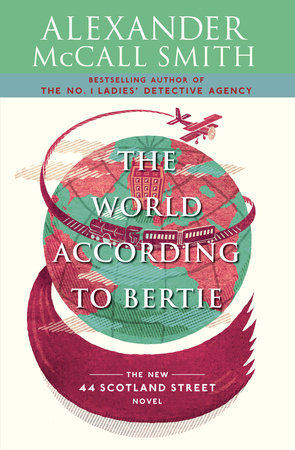
The World According to Bertie
There is never a quiet moment on 44 Scotland Street. In The World According to Bertie, Pat deals with the reappearance of Bruce, which has her heart skipping–and not in a pleasant way. As usual, Big Lou is still looking for love and handing out coffee and advice to the always contemplative Matthew. And Bertie, the beleaguered Italian-speaking six-year-old prodigy, now has a little brother, Ulysses, who Bertie hopes will help distract his pushy mother, Irene. Beautifully observed, cleverly detailed, The World According to Bertie is classic McCall Smith and a treat for his avid fans as well as his first-time readers.

The Unbearable Lightness of Scones
The fifth book in the 44 Scotland Street series, The Unbearable Lightness of Scones, finds Bertie still troubled by his rather overbearing mother, Irene, but seeking his escape in the Cub Scouts. Matthew is rising to the challenge of married life with newfound strength and resolve, while Domenica epitomizes the loneliness of the long-distance intellectual. With his customary deftness, Alexander McCall Smith once again brings us an absorbing and entertaining tale of some of Scotland’s most quirky and beloved characters–all set in the beautiful, stoic city of Edinburgh.
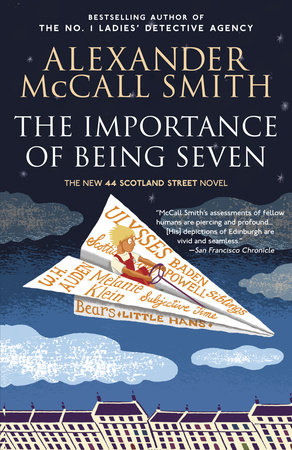
The Importance of Being Seven
After seven years and five books, Bertie is–finally!–about to turn seven. But one afternoon he mislays his meddling mother, Irene, and learns a valuable lesson: wish-fulfillment can be a dangerous business. Angus and Domenica contemplate whether to give in to romance on holiday in Italy, and even usually down-to-earth Big Lou is overheard discussing cosmetic surgery. Funny, warm, and heartfelt as ever, The Importance of Being Seven offers fresh and wise insights into philosophy and fraternity among Edinburgh’s most lovable residents.

Bertie Plays the Blues
If you don’t want to start the series from the very beginning, this is a good place to jump in, since our friends of 44 Scotland Street seem to all be in the midst of new beginnings. New parents Matthew and Elspeth must muddle through the difficulties of raising their triplets. Angus and Domenica are newly engaged. Big Lou has begun the search for a new flame, boldly exploring the new world of online dating and coming up with an Elvis impersonator on the first try. And then there’s Bertie, who has been thinking that he might want to start over with a new family and so puts himself up for adoption on eBay. With his signature charm and gentle wit, Alexander McCall Smith vividly portrays the lives of Edinburgh’s most unique and beloved characters.

Sunshine on Scotland Street
From social media to the finer points of human behavior, this episode of Alexander McCall Smith’s popular series provides an entertaining commentary on a small corner of modern life in Edinburgh where, contrary to received wisdom, the sun nearly always shines. Angus Lordie and Domenica Macdonald are finally tying the knot. Unsurprisingly, Angus is not quite prepared. The long-suffering Bertie knows firsthand how stringent his mother’s rules can be, and he resolves to help Cyril set off on an adventure. Meanwhile, Big Lou becomes a viral Internet sensation, and the incurable narcissist Bruce meets his match in the form of a doppelganger neighbor, who proposes a plan that could change both their lives.
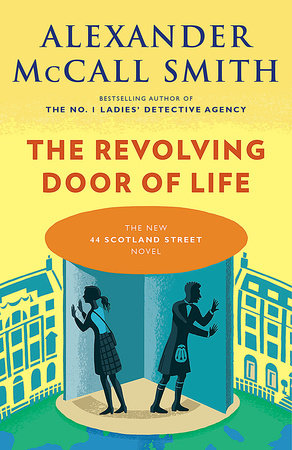
The Revolving Door of Life
Things are looking up for seven-year-old Bertie Pollock in the tenth novel in this series. The arrival of his spirited grandmother and the absence of his meddlesome mother–who is currently running a book club in a Bedouin harem (don’t ask)–bring unforeseen blessings. Meanwhile, surprises await Scotland Street’s grown-ups. Matthew makes a discovery that could be a major windfall for his family, but also presents a worrisome dilemma. Pat learns a secret about her father’s fiancée that may shake up her family. Alexander McCall Smith guides us through the risks and rewards of friendship, love, and family with his usual inimitable wit and irresistible charm.

The Bertie Project
Bertie’s mother, Irene, returns from the Middle East to discover that, in her absence, her son has been exposed to the worst of evils–television shows, ice cream parlors, and even unsanctioned art at the National Portrait Gallery. Her wrath descends on Bertie’s long-suffering father, Stuart. But Stuart has found a reason to spend more time outside of the house and seems to have a new spring in his step. And as Irene resumes work on what she calls her Bertie Project, reinstating Bertie’s Italian lessons, yoga classes, and psychotherapy, Bertie begins to hatch a project of his own–one that promises freedom.
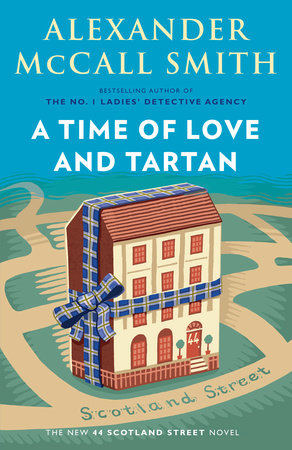
A Time of Love and Tartan
When Pat accepts her narcissistic ex-boyfriend Bruce’s invitation for coffee, she has no idea of the complications in her romantic and professional life that will follow. Meanwhile, Matthew, her boss at the art gallery, attracts the attention of the police after a misunderstanding at the local bookstore.
Whether caused by small things such as a cup of coffee and a book, or major events such as Stuart’s application for promotion and his wife Irene’s decision to pursue a PhD in Aberdeen, change is coming to Scotland Street. But for three seven-year-old boys–Bertie, Ranald, and Big Lou’s foster son, Finlay–it also means getting a glimpse of perfect happiness.
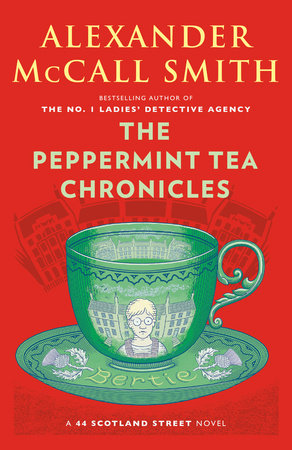
The Peppermint Tea Chronicles
Summer has come to Scotland Street, and the long days have prompted its denizens to engage in flights of fancy. With the domineering Irene off pursuing academic challenges, Stuart and Bertie are free to indulge in summer fun. Stuart reconnects with an old acquaintance over refreshing peppermint tea while Bertie takes his friend Ranald Braveheart Macpherson to the circus. But their trip to the big top becomes rather more than the pleasant diversion they were hoping for. Once again, Scotland Street teems with the daily triumphs and challenges of those who call it home, and provides a warm, wise, and witty chronicle of the affairs in this corner of the world.
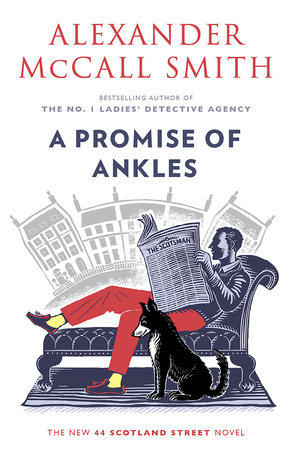
A Promise of Ankles
For the residents of 44 Scotland Street, life in Edinburgh’s intriguing New Town is a thing to be relished. After all, there are new faces to excite Domenica’s anthropological imagination, precious moments with his triplets for Matthew to savor, and the prospect of a trip to the promised land of Glasgow for young Bertie. But there are mysteries that need solving too. Could Angus Lordie’s dog, Cyril have unearthed a Neanderthal skull? How will the patrons of Big Lou’s cafe react to the menu’s imminent culinary transformation? The stories of this wonderfully vibrant cast may take unexpected turns, but the warmth and humor at Scotland’s most recognizable address will ultimately affirm the joy life brings us all.

Love in the Time of Bertie
In the microcosm of 44 Scotland Street, all of life’s richness is found in the glorious goings-on of its residents. There’s Domenica, whose anthropological training has honed her observations of her neighbors; Matthew, whose growing triplets are more than a handful; Bruce, whose challenge as ever is thinking of anything but himself; and Big Lou, who may just have found her shot at romance. And of course, there’s young Bertie Pollock, whose starry-eyed explorations of Edinburgh’s New Town are a touching reminder that life itself is an adventure and there’s joy to be found wherever you choose to look.
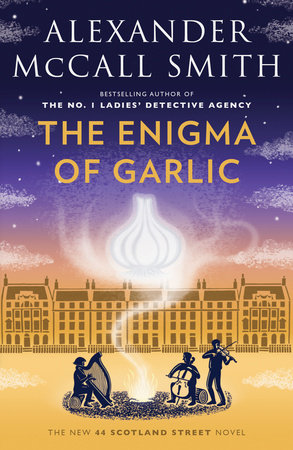
The Enigma of Garlic
Last, but not least, the latest book in the 44 Scotland Street series, The Enigma of Garlic, is now available! It’s the most anticipated event of the decade–Big Lou and Fat Bob’s wedding–and everyone is invited! But the relative peace and tranquillity of 44 Scotland Street is about to be disrupted. Domineering Irene is set to return for a two-month stay, Bruce Anderson’s new-found outlook on life is being put by the test as he prepares to leave his creature comforts for the monastic simplicity of Pluscarden Abbey, and young Bertie is being shipped off to a summer camp. Alexander McCall Smith’s delightfully witty, wise and sometimes surreal comedy spirals out in surprising ways in this new installment, but its heart remains where it has always been, at the center of life in Edinburgh’s New Town.
